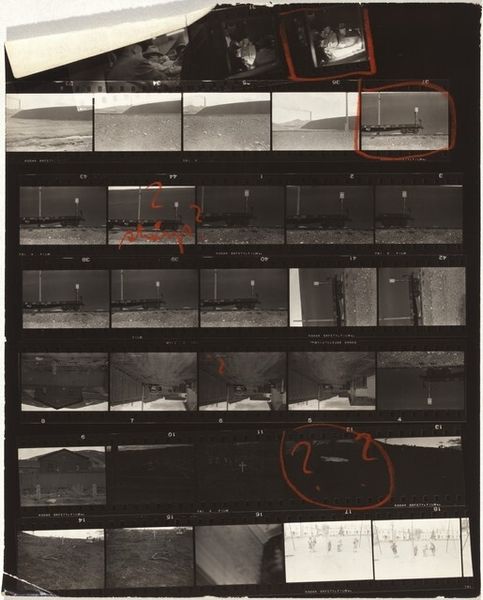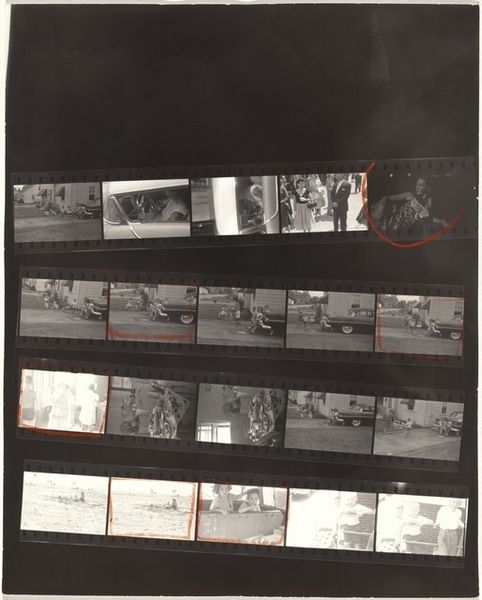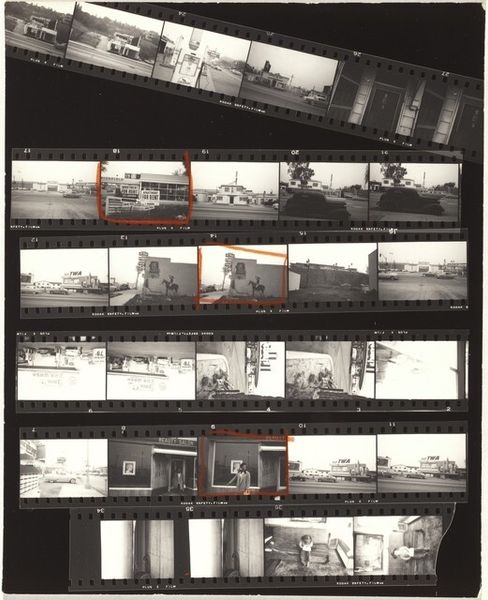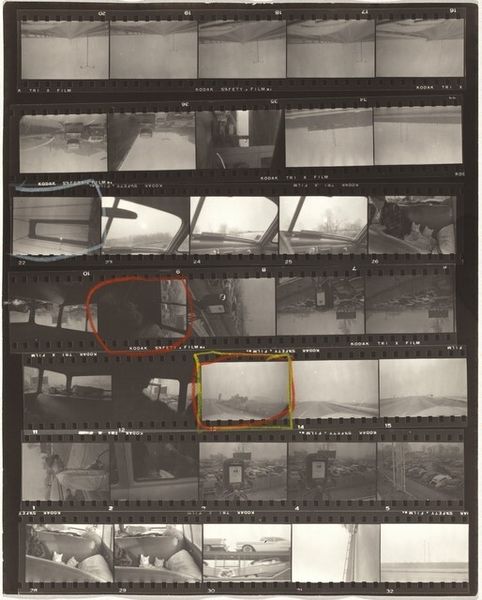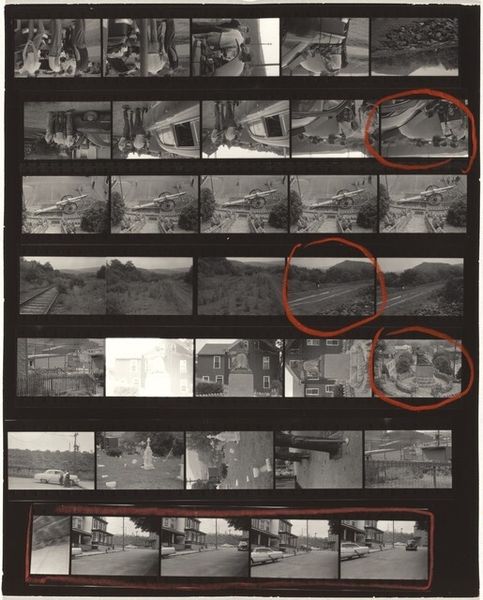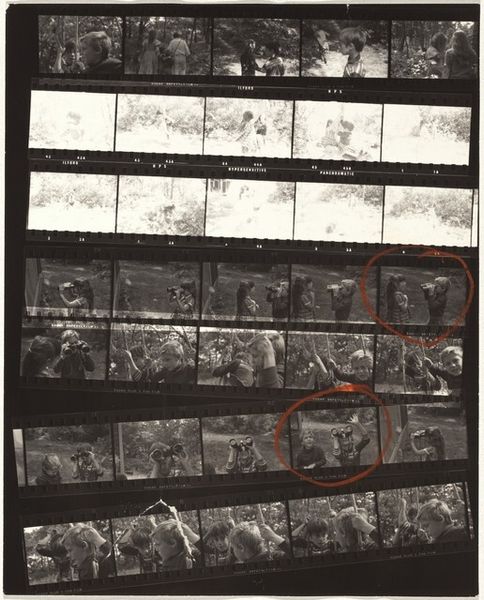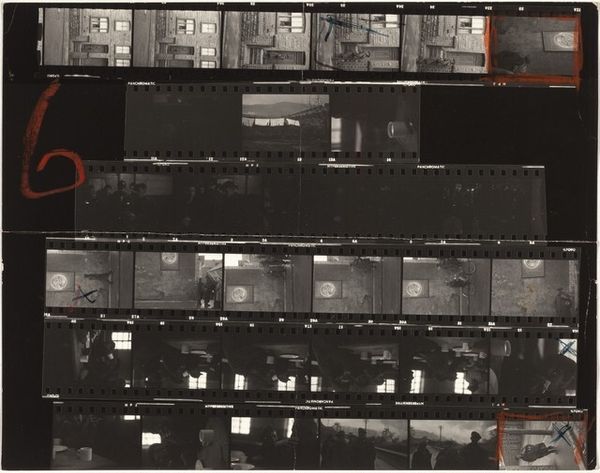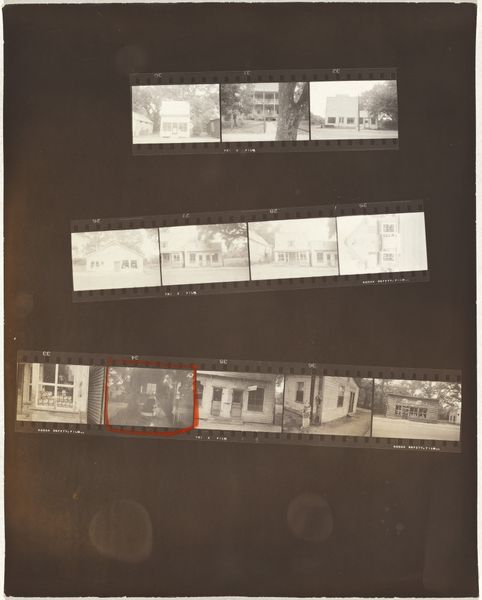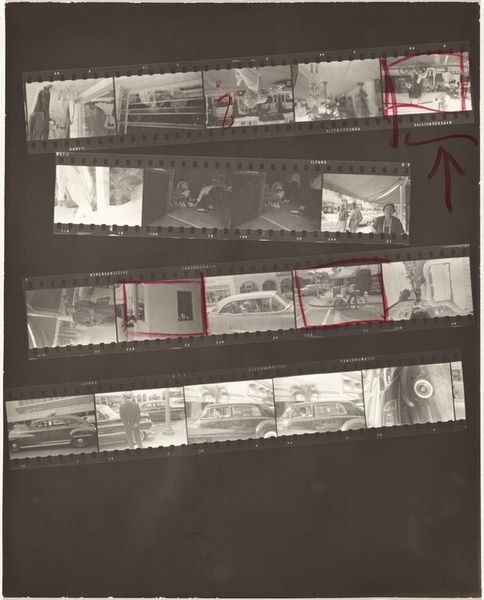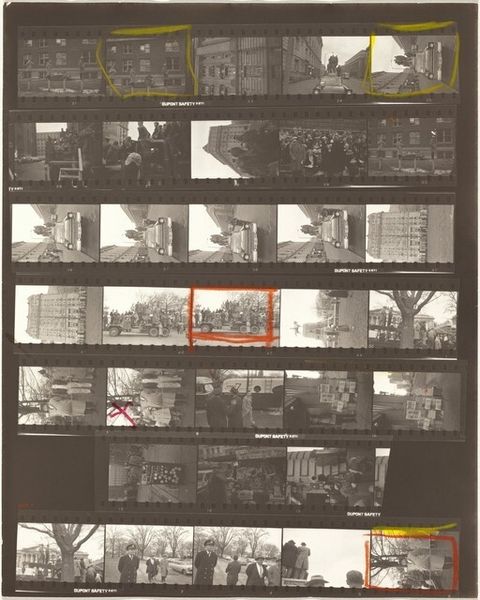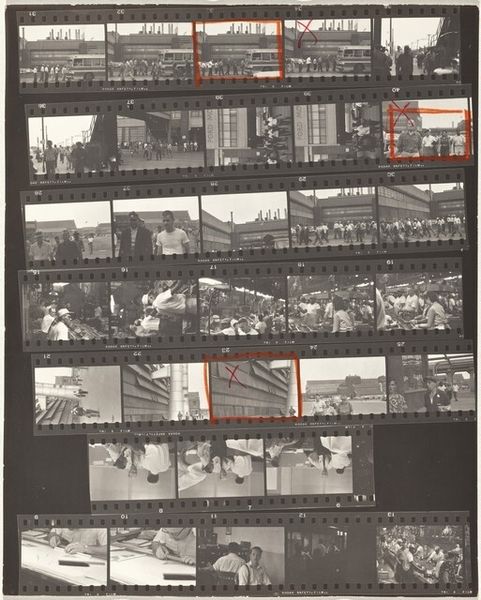
photography, gelatin-silver-print
#
landscape
#
photography
#
gelatin-silver-print
#
modernism
Dimensions: overall: 25.2 x 20.2 cm (9 15/16 x 7 15/16 in.)
Copyright: National Gallery of Art: CC0 1.0
Curator: Here we have Robert Frank's "Guggenheim 697--Cemetery, Anaconda, Montana" from 1956, a gelatin-silver print. It strikes me as raw and somewhat desolate. He has compiled strips of his negatives, marking them with squares and circles. What do you make of this image? Editor: It's definitely not your typical scenic vista. Seeing the entire film strip laid out like this—highlighted with editing marks – it pulls back the curtain on Frank’s artistic process. What about the location? What is important about that choice, a cemetery? Curator: Anaconda was a copper mining town. By presenting these rejected images in sequence, it speaks volumes about labor, land, and death. Frank documented overlooked subjects, suggesting a critique of capitalist society through the raw materials of his photographic process itself. He left us the means for our examination, to discuss a subject otherwise unseen, and discarded from publication. Why leave these on view for us, though? Editor: So, showing the editing and discards emphasizes the selective process of image-making? And I’m wondering, is he trying to equate the industrial exploitation of the land with a kind of societal decay, since a large workforce would’ve sustained the town in order to mine its copper? Curator: Precisely. It begs the question: what are the unseen costs of material progress, of capitalism? By focusing on a seemingly unremarkable cemetery in a forgotten mining town, Frank encourages us to consider what gets left behind – both physically and socially – in the relentless pursuit of resources and wealth. Consider his position as a recipient of Guggenheim funding. Editor: Right, like he’s challenging the very system that’s enabling his art. I didn't initially consider how deeply embedded his artistic choices are with these bigger social concerns. It makes the photograph much more complex. Curator: Exactly. And the format itself – the visible film strip – points to the materiality of the photograph, reminding us that it is not just a window onto the world, but an object produced through specific processes. Editor: It’s like he's showing us the mechanics of seeing, along with what he's choosing to show us. I'll remember that.
Comments
No comments
Be the first to comment and join the conversation on the ultimate creative platform.


